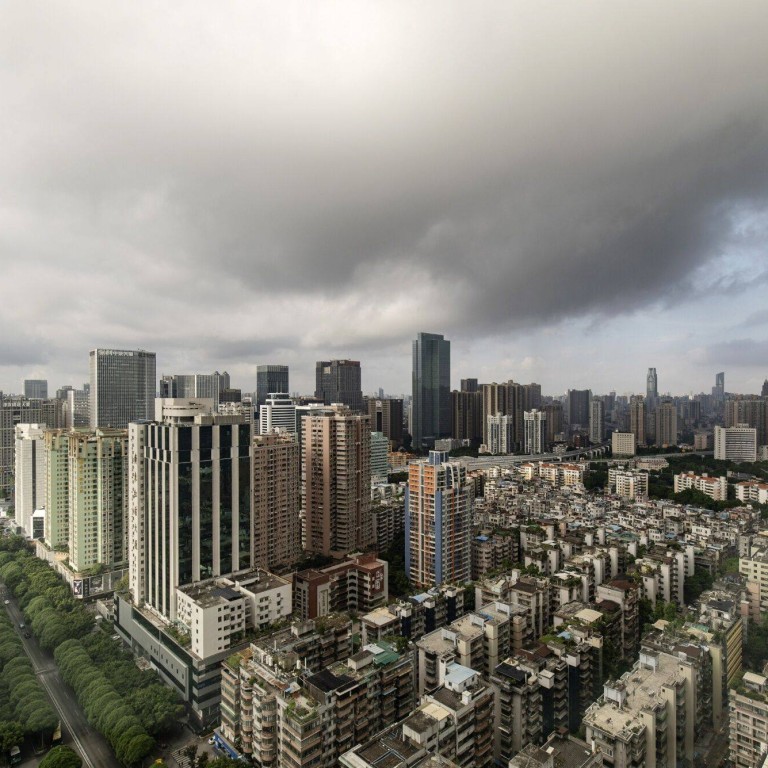
Is the next subprime crisis brewing in China’s property market?
- The slowdown in China’s asset-backed securities is raising fears of a repeat of 2008, when the complex, opaque products triggered a domino effect
- China’s potential trouble could start with the liquidity problems of its beleaguered real estate developers
China’s outlook is complicated by the rise of financial instruments that help investors manage risks in good times but accelerate downturns in bear markets, as the global financial crisis showed 15 years ago. A recent court decision in Shanghai on a case of asset-backed security fraud warns of potential dangers.
Asset-backed securities pool similar financial obligations – such as loans, credit card receivables or aircraft leases – into tradeable bond-like securities. Property, vehicles or other assets back the obligations. Loan repayments generate revenue. By blending low- and high-risk obligations, an asset-backed security can be rated investment grade to attract institutional investors. The packaging, though, may hide problems.
Though still in their infancy, asset-backed securities proved popular in China, with issuance peaking at US$494.7 billion (3.1 trillion yuan) in 2021 before retreating to US$292.4 billion last year, according to a Tsinghua University analysis.
Second in size to America’s, China’s asset-backed securities remain a largely domestic market, with both the collateral and bonds denominated in yuan. Most of the products trade on the China Interbank Bond Market, where investors are primarily local financial institutions. But the large cross holdings by banks have forged troubling interdependencies, which could trigger a domino effect when trouble erupts.
Asset-backed securities were popular because their coupon rates are usually lower than bank loans, which means issuers can raise cash at a lower cost. They are also particularly attractive for companies with limited access to traditional credit sources.
The volume of China’s asset-backed securities is very small, relative to the combined balance sheets of its financial institutions and corporations. Mortgage-backed securities account for 27 per cent of the asset-backed securities market but a very small share of the total financing raised by Chinese property companies.
So why be concerned? In the last global financial crisis, asset-backed securities played an outsized role in quickening the cascade of troubles, in which the values of asset-backed securities collapsed within hours and investment banks imploded. Credit markets were devastated, shutting out even qualified homebuyers, whose frenzied purchases caused real estate prices to soar.
The complexities of asset-backed securities made it difficult to assess losses, compounding the collapse of trust in financial markets. When it all crashed, the emperor had no clothes on.
The causes of those problems are legendary. Asset-backed security values were inflated by overly optimistic cash-flow projections. Risk was excessively concentrated in real estate. Due diligence was a nod and a wink. Assets behind some securities were illiquid receivables, which meant counterparties were impossible to find. Credit rating agencies blindly issued high marks.
That allowed the music to play until the day the asset-price bubble burst. More than US$2 trillion was wiped from the global economy, creating one of the world’s five worst financial crises.
How Chinese millennials, shadow banks could fuel a financial crisis
Fast forward to today. In China’s first case of asset-backed security fraud, a Shanghai court recently held that the underlying assets of Meijite Dengdu Management Co and their cash flows had been grossly misstated.
The court ordered the five defendants – which included legal and financial advisers and a ratings agency – to pay Postal Savings Bank of China the principal sum and interest due on its 967 million yuan investment in Meijite. Whether this is a one-off case remains to be seen.
The sector’s burdens, from falling sales to eroding property values, are straining developers’ refinancing efforts. A spillover to the broader economy is inevitable, though some note that the credit quality of China’s asset-backed securities is higher than in the 2008 crisis.
Massachusetts Institute of Technology professor Jiang Wang and Tsinghua University professor Grace Xing Hu see a deeper problem: Beijing’s objectives for its financial markets. Policies may lose focus on enhancing efficiency in liquidity provision and price discovery. They are often influenced by short-term goals, such as stimulating economic growth, as seen in the periodic relaxation of asset-backed security regulations. This is often followed by adjustments to contain risks. But, before long, the cycle of growth inducements begins again to stimulate growth.
As the global financial crisis has shown, a contraction in the issuance of asset-backed securities forewarns unravelling ahead.
James David Spellman, a graduate of Oxford University, is principal of Strategic Communications LLC, a consulting firm based in Washington, DC



